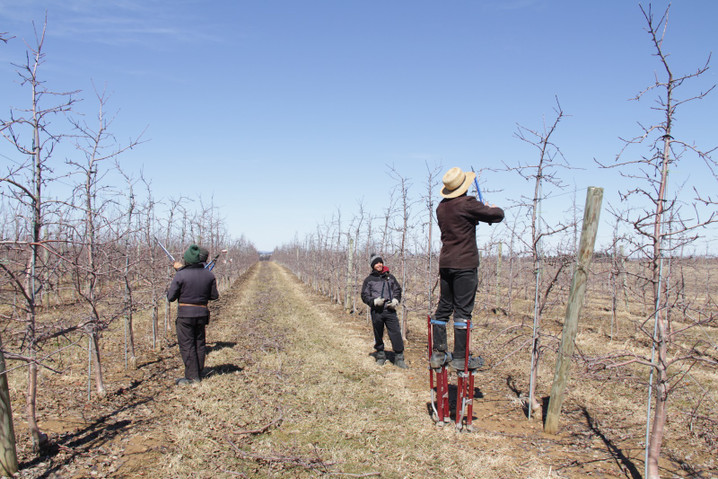Posted by Jeff Pauls & Clair Kauffman on 6th Mar 2019
Pruning the Orchard: Part One of a Three Part Series
Every year the orchard has to be pruned. If we don’t prune, we would just have a forest. Which, don’t get me wrong, forests are awesome, but a fruit farm has to have fruit to sell. So, right there, in that last sentence, is the implication that we need our fruit trees to produce fruit. With this series you’ll get a little taste of our process: when we prune, how long it takes, and a few other details. In part two, you can look forward to adding the word ‘apical’ to your vocabulary, if it’s not there already. Here’s a hint, unless a tree has a leader, producing fruit will not be it’s main priority. In part three, you’ll see the connection between exposure to sun and a tree’s disease resistance. So, when does all this begin? Answering this question and many more, our Orchard Manager, Clair Kauffman, described our entire process in a voice memo. What follows is my adaptation of what he said…
Starting around Thanksgiving, the orchard crew works full time pruning all of our orchards, finishing up mid April. Believe it or not, our crew members are out there all winter long. Except on the harshest of days, they are pruning trees all through the winter, bundled up as if they're working up north somewhere. Most of the time, if they've done a good job of suiting up, they’re relatively comfortable. Even so, I always admire them for what they do in that way, because there's not many of us that would choose to work outside all winter long. Some workers don't really care for the winter time too much. Others enjoy it, and others just do it without much comment.
Being in the office a lot in the winter time, I actually envy them in another regard, because I really enjoy working outside in the winter time. Winter is a time when we’re generally sunlight deficient and we’re fresh air deficient. I think it's just tremendous for mental health and wellbeing to spend a lot of time outside during the winter months. The air is often crisp. And the sounds, I don't know if you've ever noticed, but in the wintertime the sounds are crisper. And sounds from farther away really carry, simply because there's fewer leaves and what not to absorb sound. The sky often looks different in the winter time. If we’re lucky enough to have snow on the ground but not too much of it, we can be out there pruning in the snow. One of my favorite days pruning is when we prune during a snowstorm, but one of those very lightly falling snows with no wind. It’s amazing to work out in that kind of a snow.
A number of goals are achieved through pruning. A fruit tree requires just the right amount of space between its branches, thus allowing the fullest exposure to sunlight and air. Not only does the resulting structure enable resistance to disease and pests, it also helps the tree to achieve its optimal size and shape. Pruning creates a strong, healthy tree, capable of producing colorful and tasty fruit in just the right amounts. Pruning fruit trees is foundational to orchard management. It’s hard work and it takes a lot of time. Our orchard crew cannot be thanked enough for what they do. If it weren’t for them there would be no harvest. And just as importantly, and maybe more importantly, the harvest would not be nearly as good if not for their dedication and hard work.
In part two, the importance of form, why rootstock matters, and what turtles have to do with fruit trees will be discussed. See you next week!

